Khole Ke Hanuman Ji Temple is one of the most popular temples in Jaipur. Dedicated to Lord Hanuman, the temple is situated in an idyllic surrounding off the Jaipur-Delhi highway. It is nestled in a valley of Laxman Dungari hills. I’m sure most Hindu devotees of Jaipur must have visited this temple at some point in time. It is the most famous & visited Hanuman temple in Jaipur. This temple is famous for its many Rasoi (kitchen), Sawamani Prasad, and Dal Baati Churma Prasad.
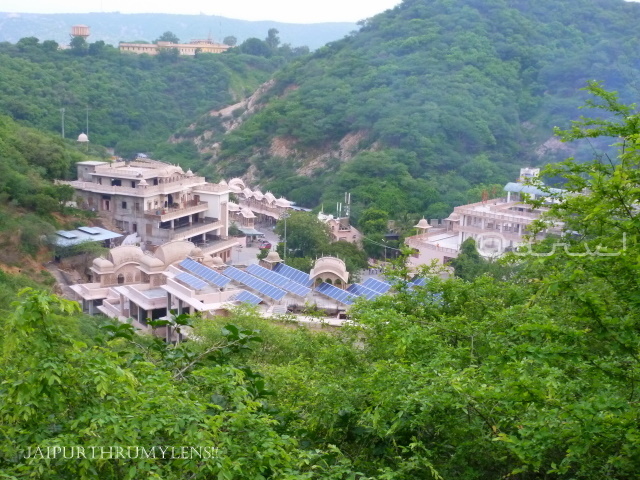
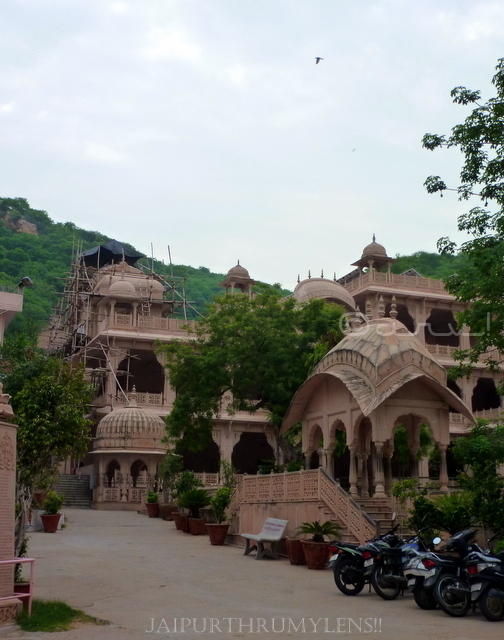
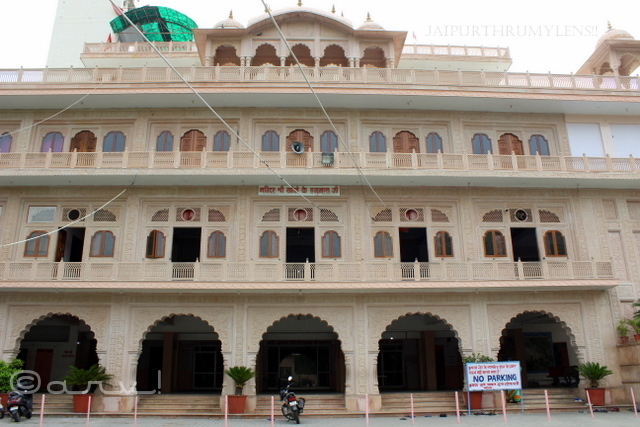
Made from Dholpur stone, a popular sandstone of Rajasthan, it replicates the architecture of a bygone era.
What is Sawamani Prasad? Sawamani is an offering made in the Lord Hanuman temple by the devotees. Sawa means one and a quarter, Mani/Mun/Mann is an old Indian measurement system called Maund & equals 37.32 Kg. A Sawamani Prasad means 46.65 Kg of the offering. This is not usually followed strictly and is rounded off.
Read Dal Baati Churma In Jaipur
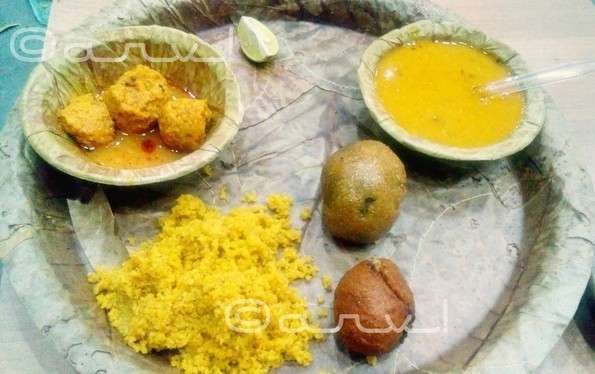
A Guide To Khole Ke Hanuman Ji Temple in Jaipur
What makes Khole Ke Hanuman Ji Temple so popular in Jaipur? It is hard to answer this question. It is certain that it is not linked with the history of Jaipur City. One of the oldest Lord Hanuman temples in Jaipur is Ghat Ke Balaji temple. The royal family of Jaipur has been one of its patrons, for years.
What is certain is the fact that Khole Ke Hanuman Ji Temple hosts a large number of “Sawamani” in Jaipur. The multiple kitchens here can serve thousands of visitors. The Sawamani Prasad is hosted in this Jaipur temple on a regular basis. This kind of facility does make it very popular among devotees. It is common for people to host Sawamani on the occasion of birthdays too.
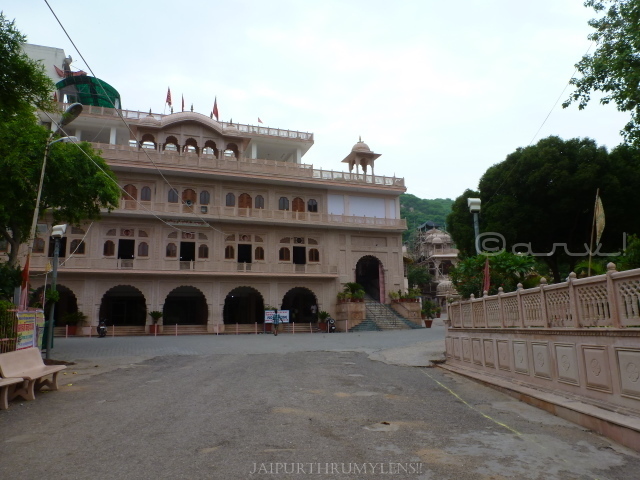
History
The temple was constructed in 1960 with an area measuring less than 100 sq feet. Over a period of time, the temple complex has grown to 300 times. It was founded by Pandit Radhey Lal Chaubey.
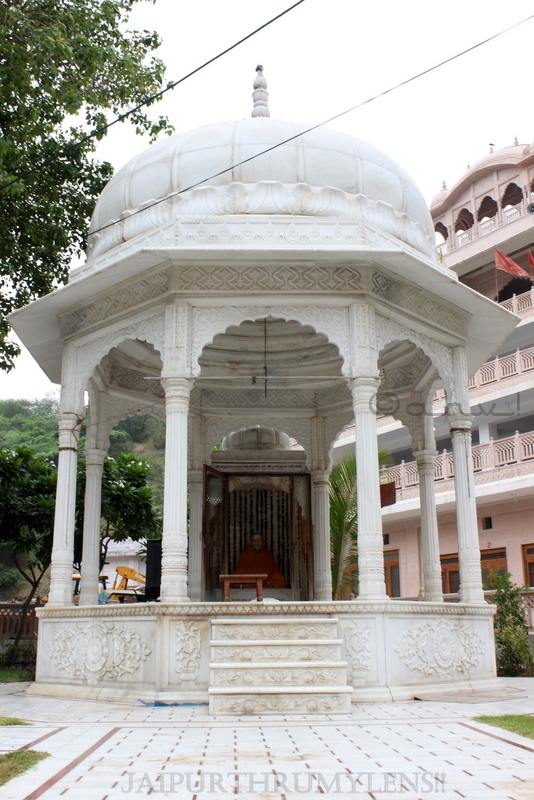
As per the popular legend, Pandit Ji was a resident of Jamwa Ramgarh and by a chance event, he spotted an image of Hamunam Ji carved on a rock during a picnic excursion. A few centuries ago, Baba Nirmal Das worshipped Hanuman Ji at the same site. This area was called Narwar Das Ki Khol.
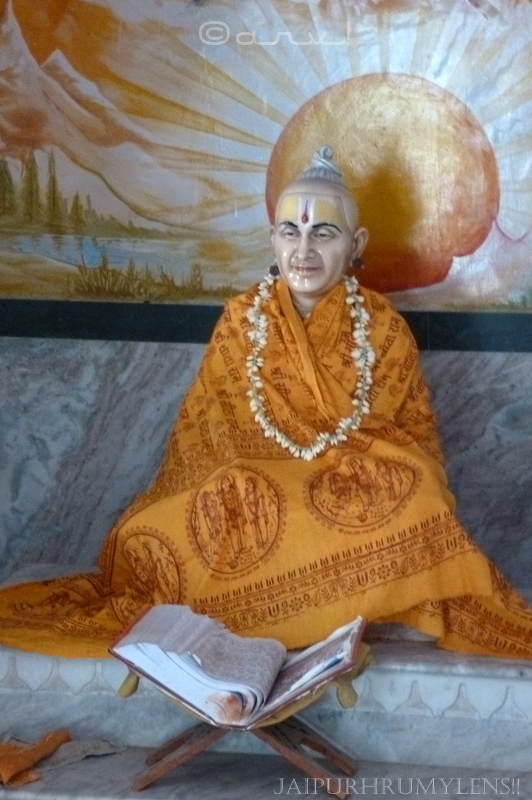
With the passage of time, the temple kept adding new annexures which explains the non-homogenous construction.
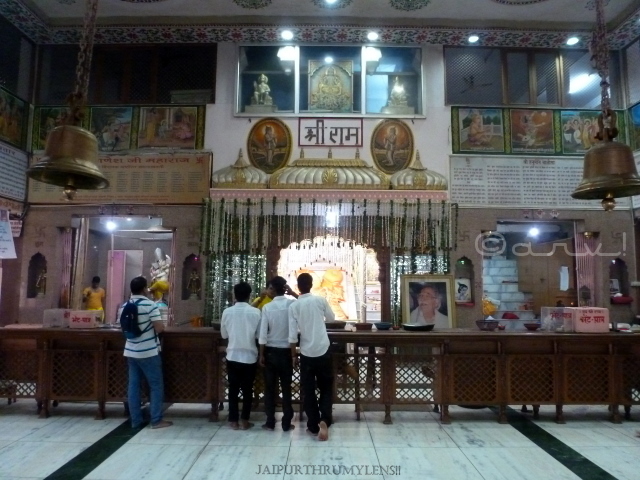

Apart from the temple dedicated to Lord Hanuman, there are temples having idols of Lord Ram, Lord Ganesha, Durga Mata, and Lord Shiva.
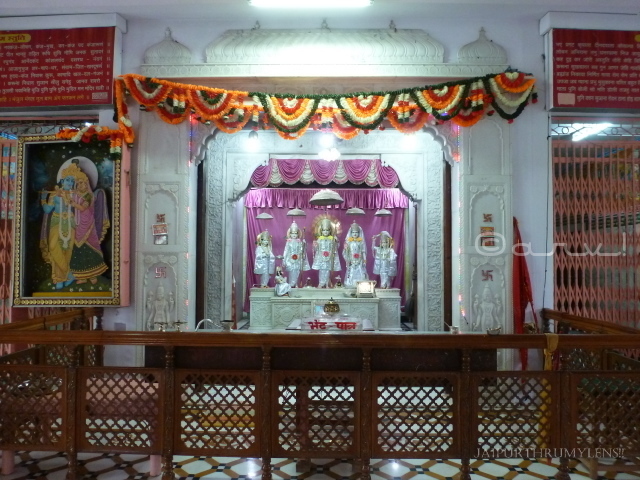
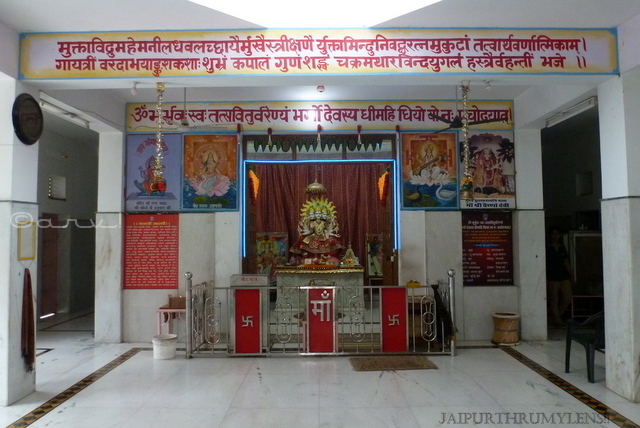
An interesting addition to Lord Shiva temple is the replicas of Shivlings from the famous 12 Jyotirlingas in India.
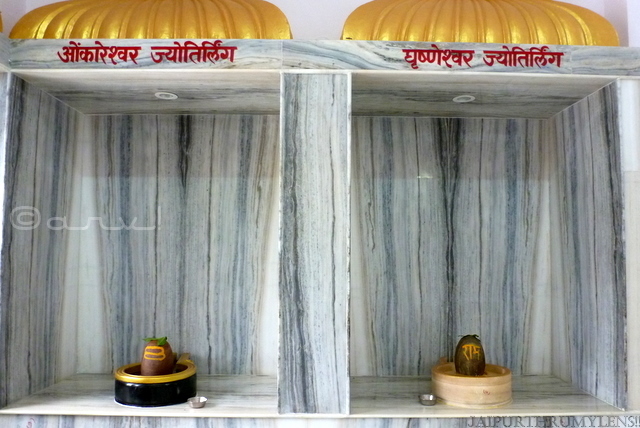
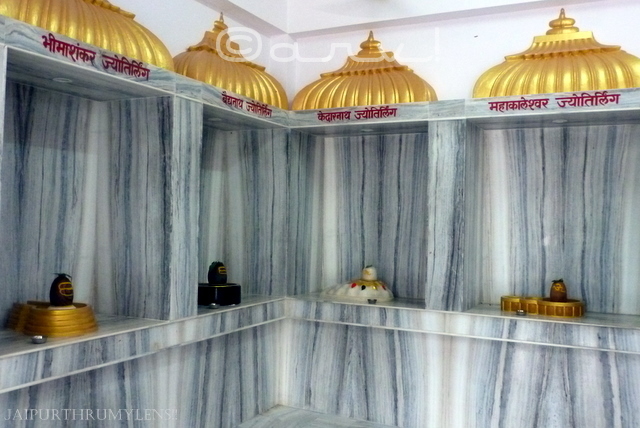
The Khole Ke Hanuman Ji temple has 24 kitchens that can serve Prasad to 5,000 people in its dining halls. Some new kitchens have also been constructed recently taking the number to 40 kitchens, More information in the Khole Ke Hanuman Ji Temple Rasoi section of this blog.The traditional Indian system of serving Prasad has devotees sitting on a carpet on the floor of a dining hall. This is how Prasad is served in most temples and Gurudwaras. However, some dining halls now have the facility of tables and chairs.
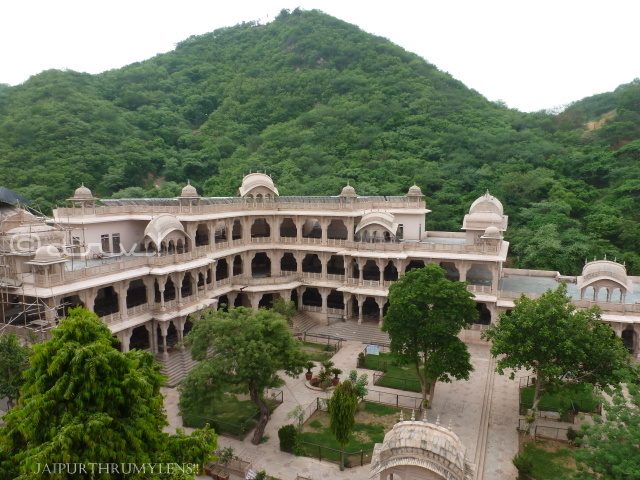
During the tenure of the last government, a sum of Rs 27 Crore or US $ 4 million was spent on the development of temple premises and infrastructure. Ten new kitchens and guest houses have been added along with a parking lot which can accommodate parking of 2500 vehicles.
It is surprising how authorities allocate such a huge sum of taxpayer money to private trusts for development in the name of the religious tourism circuit. There are other private temple trusts who have also benefited from this act of “generosity”. It is a classic case of having resources to influence government decisions.
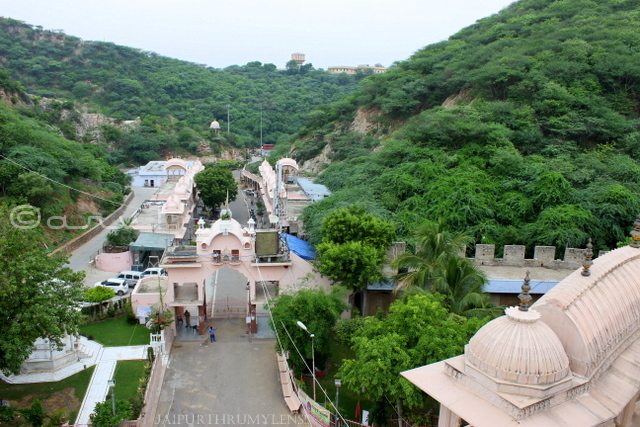

There are many heritage temples in Jaipur that are being managed by Devesthan Vibhag under the state government and are in bad shape. Devesthan Vibhag was formed after India gained Independence and it took control of all temples run and managed by the princely state of Jaipur. Most such temples are in need of urgent repair and maintenance but this department doesn’t have enough resources.
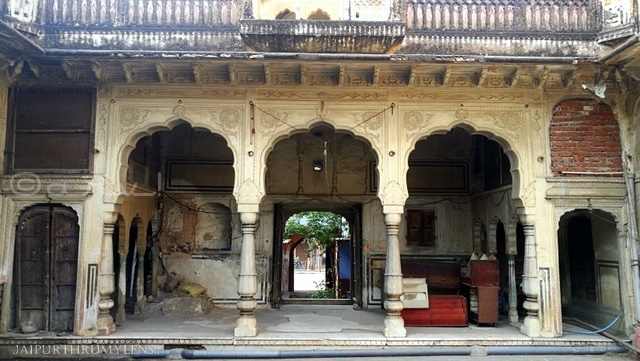
I’m sure if the government allocates money to these heritage temples, it can help preserve our heritage as well as promote tourism.
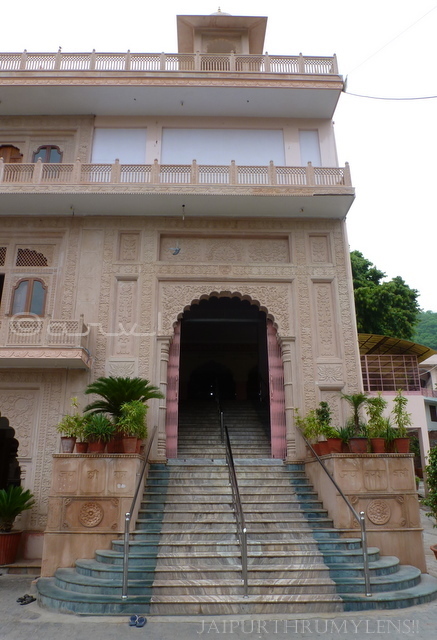
Is it worth visiting the temple?
From an architectural or heritage point of view? No. If you love visiting and exploring offbeat places, and people-watching, it is an interesting place as it is very popular among the locals. I can say without an iota of doubt that Khole Ke Hanuman Ji Temple is the most popular Lord Hanuman temple in Jaipur.
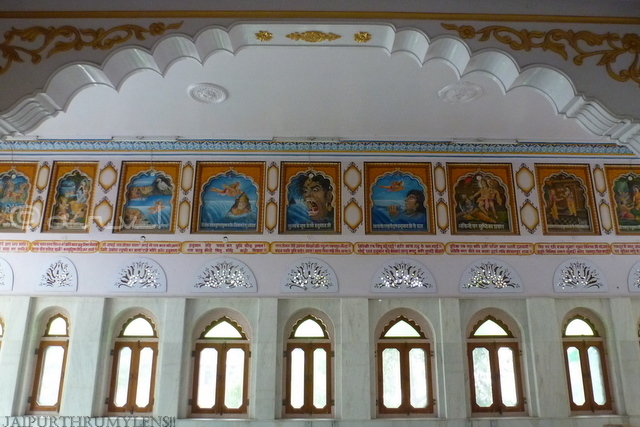
Locals visit this place in great numbers during the monsoon when the number of Goths goes up drastically. Goth refers to a picnic in the local language. Indian month of Posh is also popular for organizing Posh Bada Prasad apart from the Sawamani.
Sawamani Prasad in Khole Ke Hanuman Ji Temple Jaipur
Sawamani refers to food usually Indian sweets like Ladoo offered by a devotee to the deity. The word is derived from the word “Sawa” meaning one & quarter and “Mann” referring to the unit of measurement used during colonial India – Maund or Mann. Therefore Sawamani usually involves offering approximately 47-51 Kg.
Temple Distance from Jaipur city center
From Johari Bazaar Khole Ke Hanuman Ji Temple is approximately 7 Km on the Jaipur-Delhi highway. The temple is located 2 km in a valley off the highway.
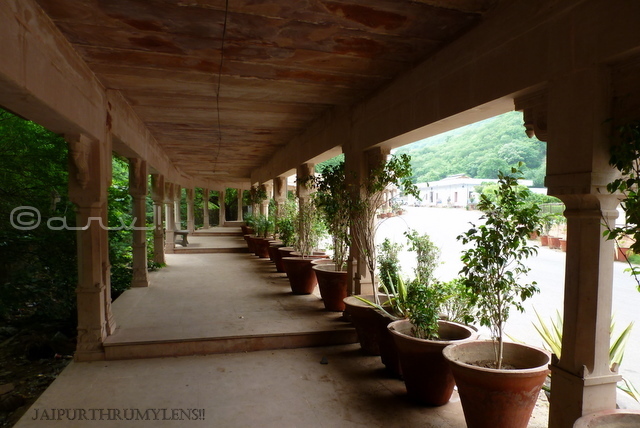
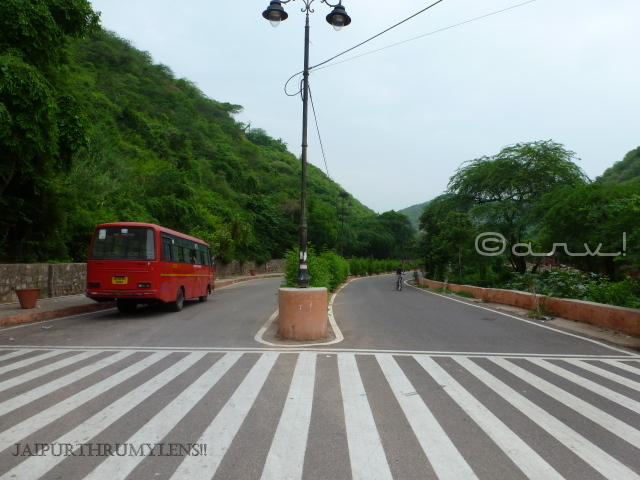
Temple Timings
Khole Ke Hanuman Ji Temple is open throughout the day and one can have darshan from 5 AM to 9 PM.

Khole Ke Hanuman Ji Rasoi Booking
It is easy to host Prasad at Khole Ke Hanuman Ji Temple. Even though the menu options are fixed, there are many variations to choose from. All you need to do is contact the management and check if any Rasoi or kitchen is available on your chosen date. If it is available, you can book the same. The charges are based on the number of people and the menu. There is rent for the kitchen along with per-person charges. The rent for the kitchen ranges from Rs 1600-9100. The most expensive being Rasoi No 23 & 24, rent for Rasoi 1 to 22 ranges between 1600-3100. The per-person charges for Rasoi 1 to 22 are Rs 200/person and Rasoi number 23-24 is Rs 500/person. Some of the Rasoi’s can host from 400-1000 people. A new wing has been constructed near Khole Ke Hanuman Ji Temple Parking with new Rasoi or Kitchen numbering Rasoi Number 31 to Rasoi Number 40. These Rasoi are before the main temple and are easier to access but these are comparatively smaller in terms of capacity. Located on the 1st and 2nd floor, the new Khole Ke Hanuman Ji Mandir Rasoi can be reached using a lift or staircase.
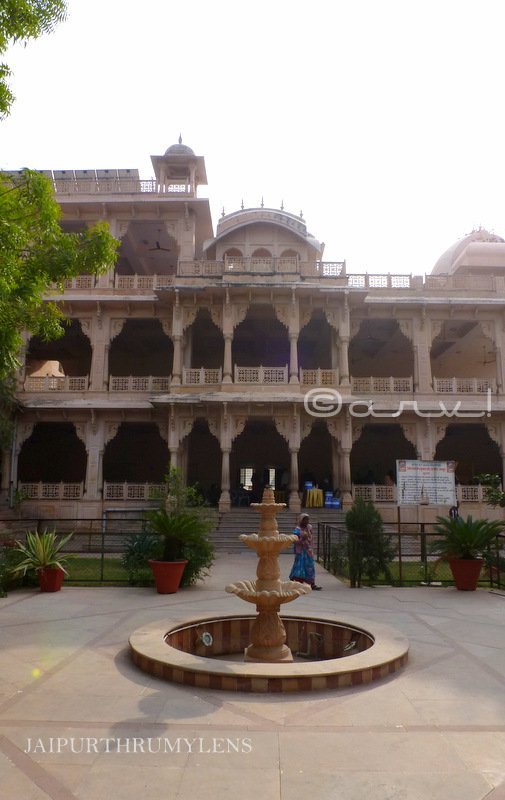
Khole Ke Hanuman Ji Temple Ropeway
In September 2023, the Khole Ke Hanuman Ji temple trust inaugurated a ropeway to the Vaishno Devi temple on a hilltop. The distance to this temple is approximately 400 meters and will be covered by a ropeway. The initial plan is to operate 12 units with a capacity of 6 persons in each. The time taken will be around 4 minutes.
Khole Ke Hanuman Ji Temple Ropeway Charges
The charges for the Khole Ke Hanuman Ji Temple ropeway are Rs 150 per person for an adult and Rs 75 per person for a child up to 5 years. The rates are for the round trip. The estimated cost of the Khole Ke Hanuman Ji Temple ropeway is around Rs 18 Crores. In another statement, the temple authorities have offered free ropeway rides for kids up to age 5 and senior citizens above the age of 70. Kindly check with the temple trust as this offer may be withdrawn at a later date.
Khole Ke Hanuman Ji Temple Ropeway Timings
The Khole Ke Hanuman Ji Ropeway timings are 9 AM to 9 PM, everyday.
Is Vaishno Devi Temple and Khole Ke Hanuman Ji Temple ropeway worth the money? For the former, no. For the latter, if you have never been on a ropeway, it is worth the experience. If you have experienced ropeway in India and elsewhere, the ropeway might not provide you a unique experience. The views on the ropeway might be interesting, especially during monsoon. I have had the chance to explore this area and I can definitely say that during the monsoon, the backdrop of Jaipur city with a green foreground is magnificent. I have not had a chance to undertake the Khole Ke Hanuman Ji Temple Jaipur ropeway as yet so I will refrain from passing any judgment.
Is it the Most Famous Hanuman Temple in Jaipur?
Many people especially travelers from other countries get confused between Khole Ke Hanuman Ji Temple and Galta Ji Temple. Even though both these temples are close by there are many differences. Khole Ke Hanuman Ji temple is the most famous Hanuman Temple in Jaipur, especially among the locals. It is not a heritage temple, the construction is fairly new and ongoing.

Galta Ji on the other hand despite being called the Jaipur Monkey Temple is dedicated to Lord Rama. So if you are looking for the Monkey Temple, this is the place to go. You will find hundreds of monkeys at Galta Ji. It is a historic heritage temple.
Read the complete blog on Galta Monkey Temple – The Captivating Galta Temples
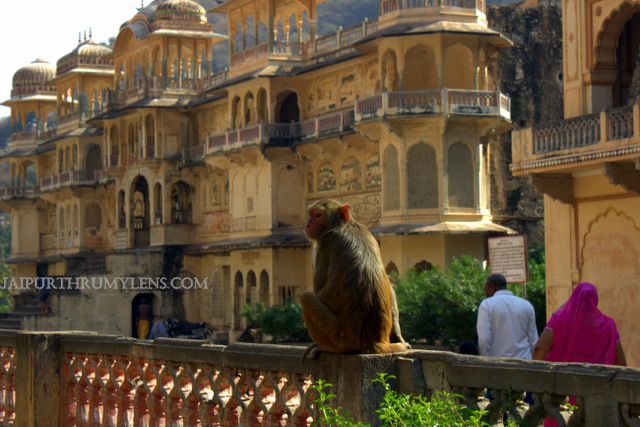
Sand Dunes in Jaipur
I can recall playing in sand dunes on every visit to Khole Ke Hanuman Ji Temple during my childhood years. The temple wasn’t that developed and there were many sand dunes in this area. Kids racing on the way up was very common and so was rolling down by losing balance. All that has changed now and the chances of spotting a sand dune are not easy though there are a few left, even now! Have you ever rolled down a sand dune?
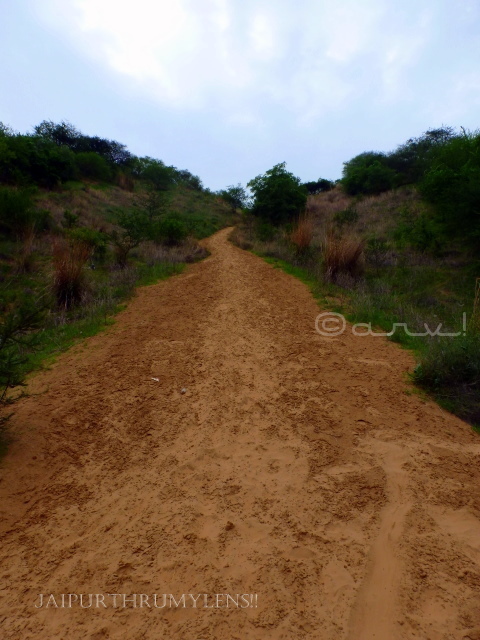
Stay updated via Facebook, Twitter, Instagram
Check out other Heritage Temples Of Jaipur
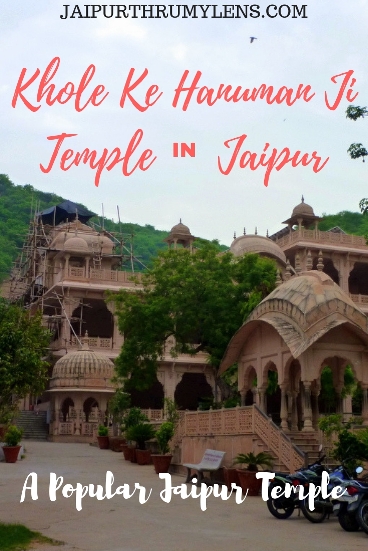
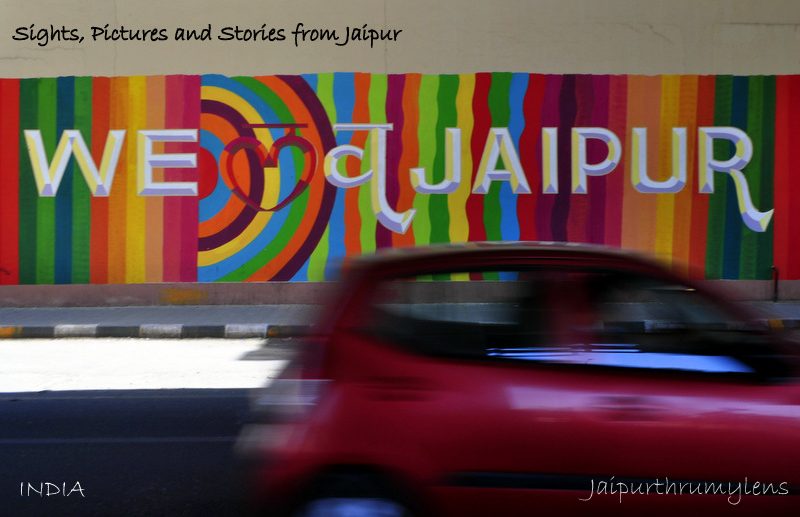
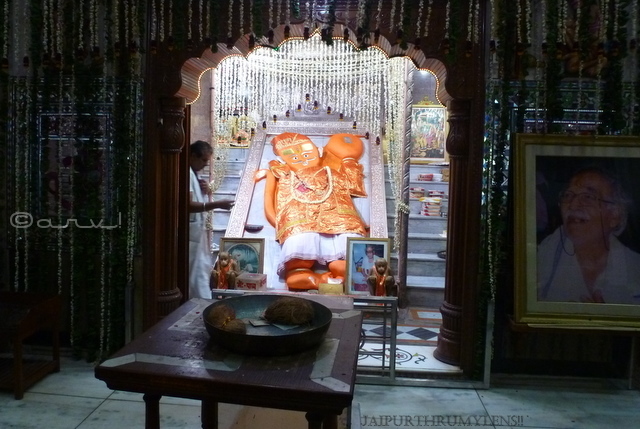

Happy New Year, Arv! You know I love and find your posts inspiring – so I have nominated you for the Versatile blogger award and shared one of your posts on my regular “Monday Magic” feature – find details for the award here: https://painpalsblog.com/2019/01/06/old-year-new-year-and-being-a-versatile-blogger/. It would be lovely if you join in, but don’t feel you have to – either is cool! Claire x
LikeLiked by 1 person
Hi, Claire, Thanks for nominating me for an award. Your nomination itself is inspiring. Unfortunately, my blog is award free and I’m feeling sorry for not being able to complete this request. I’ll check out your post. Hope to see you around. Thanks for nominating, Claire 🙂
LikeLiked by 1 person
You are welcome and don’t worry – just know your writing is appreciated 😊
LikeLiked by 1 person
Thank you, Claire. Appreciate it. You prompted me to write about the regular places, otherwise I only wrote about offbeat places.
LikeLiked by 1 person
I would love to have the food there. While I found this very interesting, I completely agree with the point you made about tax payers money channelized like this. I wonder about our country and how we use our money. Thanks for linking up, Arvind!
LikeLiked by 1 person
Sorry – you left a link and this is a lovely travel post. Got mistaken than you had shared a tree 🙂 Always happy to be here and read your Jaipur stories.
LikeLiked by 1 person
I guess I have missed a picture of tree to qualify for your TTL. I will do that soon. Was just experimenting if I can add more value for the readers than simply posting a picture of tree.
LikeLiked by 1 person
totally agree and I loved your post. I got confused since your comment was a link. How ever you want Arvind. You know there is no rule my side. We love to read and know more about nature. 🙂
LikeLiked by 1 person
Thanks for making it easy, Parul. I wish I could write more often and highlight the variety of trees that we have around us and which is what I wanted to do in trees of Jaipur. Being a nature lover, I’m happy to be a part of TTL. 🙂
LikeLiked by 1 person
Parul,Thanks for sharing your views. In short, I think there are a lot of things that needs to change. Power and money is often misused. I’m sure you have many things to share on this.
LikeLiked by 1 person
The structure of the temple is beautiful. I would love to have that prasad– dal-baati-churma. And, what I like most…there’s so much green around the temple. Simply wonderful ambience… 🙂
LikeLiked by 1 person
I agree that two striking things about Khole Ke Hanuman Ji is its location and Dal Baati Churma. Do you love visiting temples? especially when you travel?
LikeLiked by 1 person
Yes…I love exploring them.
LikeLiked by 1 person
Great, Maniparna
LikeLiked by 1 person
I visited the temple…such a calm and serene place.
LikeLiked by 1 person
You did? It is not really a tourist attraction. 🙂
LikeLike
Yeah but I had never been there before. I managed to see some new places like this temple, Galtaji, Isarlat.
LikeLiked by 1 person
Galta Ji is historic both from religious point of view and in terms of its architecture and history.
LikeLike
I know…it’s an important place in gaudiya vaishnava tradition and that’s why I was keen on visiting it. However, there was no net connectivity over there and since I had taken Uber cab, it was tough.
LikeLiked by 1 person
ah! Not well served by UBER from Agra Road side? Most international travelers prefer to walk down from the city side on Galta Gate. Though not everyone’s cup of tea.
LikeLike
Yeah…and the monkeys were scary. It was a beautiful place but wish cleanliness was maintained.
LikeLiked by 1 person
I agree. I don’t know why some religious places in our country go hand in hand with the filth?
LikeLike
Because majority of the people don’t take responsibility and then complain…Even the scribblings on monuments are disgusting.
LikeLiked by 1 person
I agree.
LikeLike
The Prasad seems to be so tempting, I would like to have it someday. The place also looks peaceful within the greenery. I do agree with your view on channelising the money of the restoration of heritage temples.
LikeLiked by 1 person
The Prasad is definitely a big temptation. Lol. Do you visit temples when you travel, Sarmistha?
LikeLiked by 1 person
I am not much of a temple person mostly because of the crowd, so my visits are mostly till the main gates. I often skip temples too untill and unless I am accompanied by my parents. 😛 Yes, I do like visiting peaceful and clean temples.
LikeLiked by 1 person
Well, it’s a same case here as well. I generally visit temples when there’s not much crowd. Also there are many heritage temples that have fallen out of popularity. They are peaceful. Generally, temple means crowd.
LikeLiked by 1 person